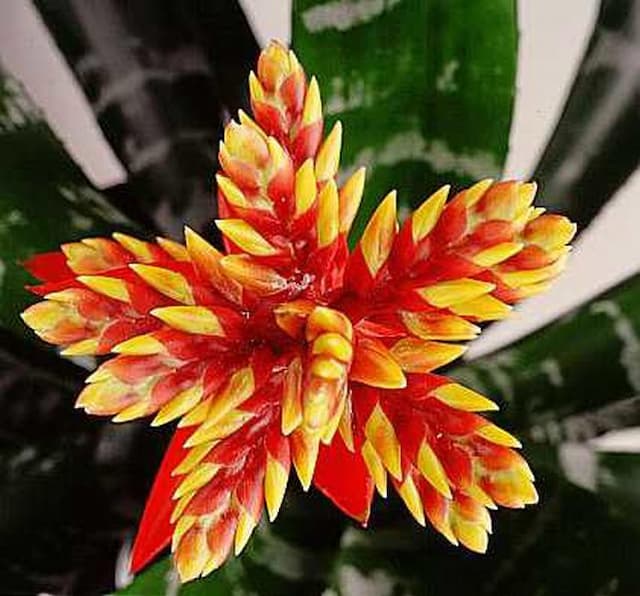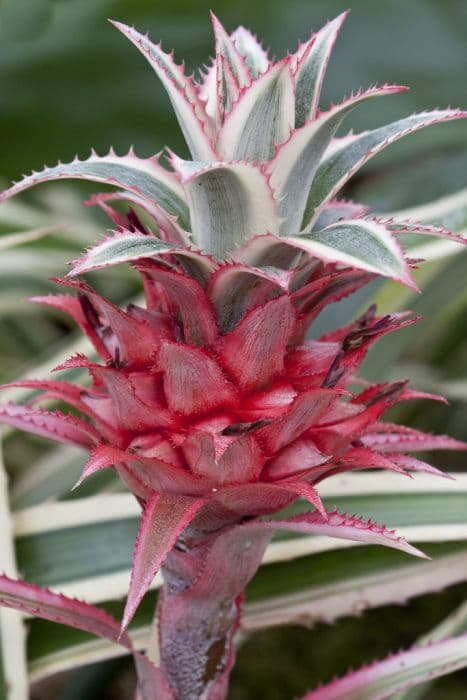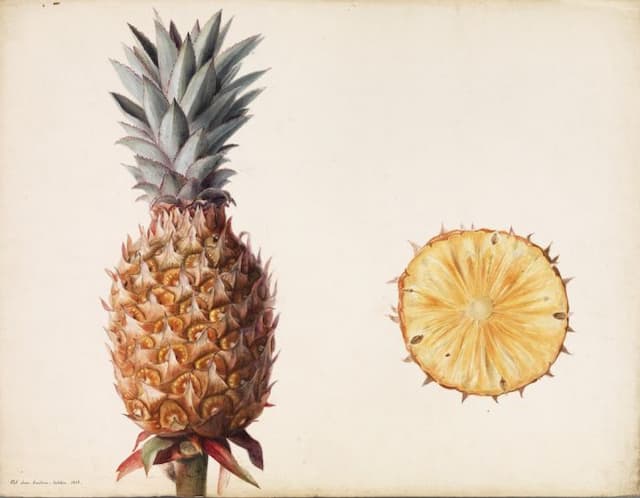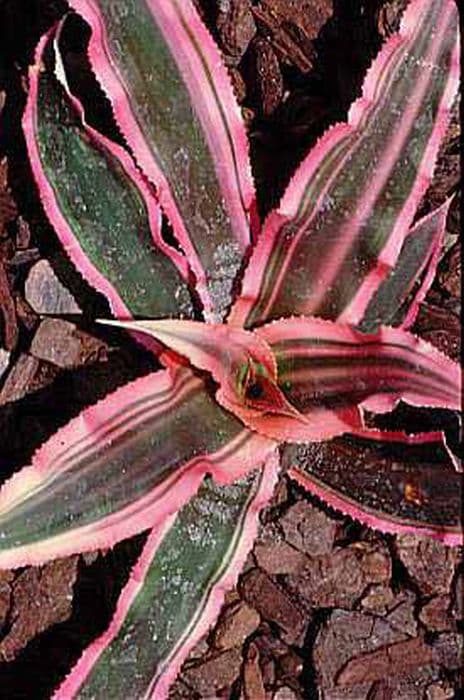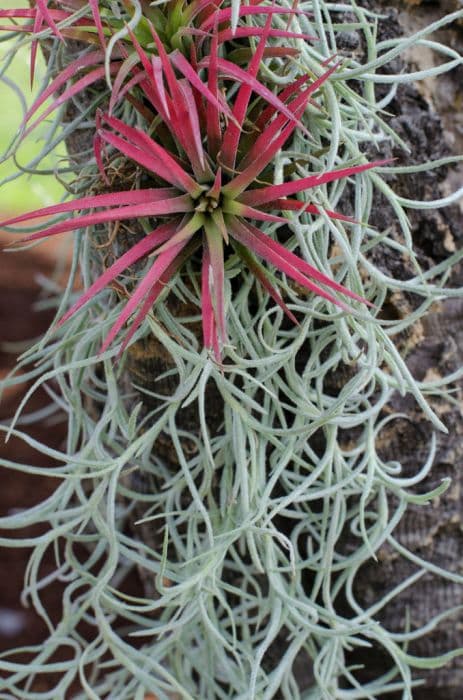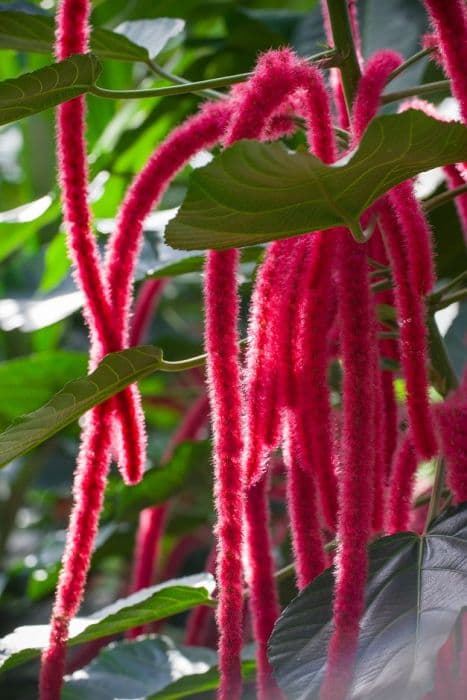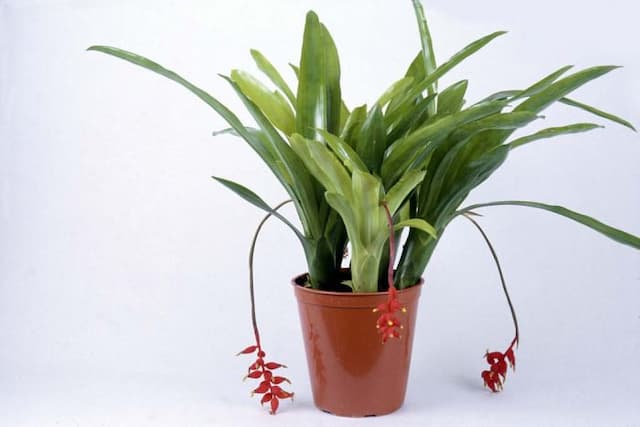Sapphire Tower Puya coerulea

ABOUT
Puya coerulea, commonly known as the blue Puya, is a striking plant that presents a unique and ornamental appearance. Characterized by its rosette-forming nature, the blue Puya showcases a dense cluster of narrow, strap-shaped leaves which are stiff and often come with spiny edges, giving the plant a formidable look. The leaves boast a grayish-green hue, contributing to its exotic visual appeal. One of the most distinctive features of the blue Puya is its spectacular flower. The blooms of the blue Puya are usually an eye-catching metallic turquoise or blue-green color, which is quite rare in the plant world. These flowers are borne on a tall spike that rises distinctly above the foliage. Fascinated by its iridescence, observers are drawn to the unusual yet fascinating color of the blossoms. The plant's overall form is typically sculptural, with a robust and architectural character that makes it a standout in any collection or as a centerpiece in garden designs. The exotic appearance of blue Puya, combined with its impressive blooming spike, makes it a sought after species for enthusiasts who are on the lookout for unique and rare plants to enhance their gardens or green spaces.
About this plant
 Names
NamesSynonyms
Turquoise Puya, Metallic Puya, Blue Puya
Common names
Puya berteroniana, Puya venusta, Pourretia coerulea, Pourretia venusta
 Toxicity
ToxicityTo humans
Puya coerulea, commonly known as Sapphire Tower, is not widely recognized for its toxic effects on humans. There is limited information on the toxicity of this plant to people, and it generally isn't associated with severe poisoning. However, as with many plant species, it is likely best to avoid ingesting any part of this plant, as it could potentially cause mild stomach upset. Noteworthy caution should be taken especially around children and pets, but specific symptoms of poisoning from Puya coerulea are not well-documented.
To pets
Puya coerulea, also known as Sapphire Tower, does not have a well-documented history of being toxic to pets. However, as with any non-food plant, ingestion of this plant by pets should be avoided as it could potentially cause gastrointestinal discomfort or other non-specific symptoms due to the novelty and indigestibility of the plant material. If you suspect your pet has ingested any part of this plant, monitor for vomiting, diarrhea, or signs of distress, and consult a veterinarian. While specific symptoms of Sapphire Tower poisoning are not commonly reported, it's important to exercise caution with pets and unfamiliar plants.
 Characteristics
CharacteristicsLife cycle
Perennials
Foliage type
Evergreen
Color of leaves
Green
Flower color
Blue
Height
3 feet (0.91 meters)
Spread
2 feet (0.61 meters)
Plant type
Shrub
Hardiness zones
8
Native area
South America
Benefits
 General Benefits
General Benefits- Ornamental interest: Puya coerulea, commonly known as Blue Puya, has striking, metallic blue flowers and silvery-green foliage, which can add an exotic and dramatic look to gardens and landscapes.
- Drought tolerance: Blue Puya is well adapted to arid environments and can thrive with minimal water, making it suitable for xeriscaping and dry garden landscaping.
- Wildlife Attraction: The nectar-rich flowers of Blue Puya attract pollinators such as hummingbirds and bees, contributing to the local ecosystem's biodiversity.
- Architectural structure: With its large, rosette-forming habit and tall flower spikes, Blue Puya can provide an interesting architectural element to garden design.
- Low maintenance: Once established, Blue Puya requires relatively little care, other than occasional removal of dead leaves or spent flower spikes.
- Long lifespan: Blue Puya plants are slow-growing and can live for many years, offering a long-term presence in the landscape.
 Medical Properties
Medical PropertiesThis plant is not used for medical purposes.
 Air-purifying Qualities
Air-purifying QualitiesThis plant is not specifically known for air purifying qualities.
 Other Uses
Other Uses- The stiff foliage of the Sapphire Tower can be used in crafting and as a natural fabric for weaving small items such as baskets and mats due to its fibrous nature.
- The sharp spines on the plant's leaves can be utilized as natural fences or barriers to deter animals and unauthorized access to specific areas.
- Due to its striking appearance, the Sapphire Tower is sometimes used in thematic gardens to represent arid or extraterrestrial landscapes in film and theater productions.
- The inflorescence of the Sapphire Tower, with its unique shape and color, could be used in dried floral arrangements for decorative purposes.
- Horticulturalists may use the Sapphire Tower as a parent in hybridization to transfer its drought-resistant traits to create new, resilient plant varieties.
- The plant's ability to thrive in rocky substrates makes it an ideal candidate for studying plant survival in extreme conditions, contributing to ecological research.
- Its tall and unique floral stalks can be a natural art installation in contemporary landscape design, providing an aesthetic focal point in gardens and parks.
- The Sapphire Tower can be planted on slopes and hillsides to aid in erosion control due to its root system that helps to stabilize the soil.
- Photographers and artists might use the plant as a subject or backdrop due to its unique appearance and texture, offering an interesting visual for various artistic projects.
- Environmental education programs might utilize the Sapphire Tower to teach about adaptation and survival strategies that certain plants develop in arid environments.
Interesting Facts
 Feng Shui
Feng ShuiThe Puya coerulea is not used in Feng Shui practice.
 Zodiac Sign Compitability
Zodiac Sign CompitabilityThe Puya coerulea is not used in astrology practice.
 Plant Symbolism
Plant Symbolism- Resilience: Puya coerulea, commonly known as Blue Puya, often thrives in harsh, rocky environments, symbolizing the ability to endure and persist through difficult conditions.
- Uniqueness: With its striking blue-green flowers and unusual appearance, the Blue Puya represents the value and beauty of being different and standing out in a crowd.
- Protection: The plant’s tough, spiky foliage can symbolize protection and defense, implying a layer of security and safeguarding from outside threats.
- Inspiration: The rare and captivating blooms of Blue Puya can signal inspiration, pushing individuals to strive for innovation and create what hasn't been seen before.
 Water
WaterThe Silver Puya should be watered deeply, allowing the soil to dry out completely between waterings. During the growing season, this might be roughly once a week, depending on temperature and humidity, but always check the soil moisture first. Provide around 1 to 2 gallons of water for a mature plant each time you water, ensuring even distribution over the soil to reach the roots. Reduce watering frequency in the winter months to every couple of weeks or less, as the plant enters a dormant phase and requires less moisture.
 Light
LightSilver Puya thrives best in full sunlight to partial shade. For optimal growth, a location that offers direct sunlight for several hours a day, especially in the morning, with some afternoon shade to protect it from the most intense rays, would be ideal. Avoid deep shade, as insufficient light can hinder flower production and overall vigor of the plant.
 Temperature
TemperatureSilver Puya prefers temperate climates and can endure temperatures down to about 20°F, though frost can be damaging. The ideal temperature range for this plant is between 50°F and 80°F. It can withstand short periods of higher temperatures, but prolonged heat can stress the plant.
 Pruning
PruningPrune Silver Puya to remove dead or damaged leaves and spent flower stalks. This helps maintain the plant’s appearance and encourages healthier growth. Pruning is best done in the early spring or after flowering. Cut back any foliage or flower stalks that are unsightly or brown, but be cautious with the sharp spines.
 Cleaning
CleaningAs needed
 Soil
SoilThe Linden's Puya thrives in well-draining, sandy or gravelly soil mix, with added peat for slight acidity. The ideal pH for this plant is around 6.0 to 7.5.
 Repotting
RepottingLinden's Puya should be repotted every 2-3 years to refresh the soil and accommodate root growth.
 Humidity & Misting
Humidity & MistingLinden's Puya prefers low to moderate humidity levels, typically between 40-50%.
 Suitable locations
Suitable locationsIndoor
Provide bright light, limited water, and temperature above 5°C.
Outdoor
Grow in full sun, well-drained soil, and protect from severe frosts.
Hardiness zone
8-11 USDA
 Life cycle
Life cyclePuya coerulea, also known as Lindley's Puya, begins its life cycle with germination, which occurs when its seeds successfully sprout in well-draining soil with adequate moisture. The seedlings grow into a rosette of narrow, spiky leaves, and this vegetative stage can last for several years as the plant slowly matures. During its growth, Puya coerulea develops a deep root system that helps it survive in arid conditions, typical of its native Chilean habitats. After reaching maturity, which can take several years, the Puya coerulea produces a tall, dramatic flower spike that can reach several meters in height and is covered with numerous metallic turquoise to violet flowers, attracting pollinators such as hummingbirds. Once pollinated, the flowers produce seeds that are then dispersed, usually by wind or gravity, completing the reproductive cycle. After flowering, which may take considerable energy, the individual rosette that bore the flower spike typically dies, but new offset rosettes may have formed at the base to continue the species' life cycle.
 Propogation
PropogationPropogation time
Spring to Summer
Puya coerulea, commonly known as the Blue Puya, can be propagated primarily through seeds. The best time to propagate the Blue Puya by seeds is in the spring. To propagate by seed, one must first obtain fresh seeds, which will germinate more effectively than older, dried-out seeds. These seeds are sown on a well-drained, sandy soil mix and covered with a light sprinkling of the substrate to keep them moist. The container with the seeds should be kept at a temperature around 70°F (21°C) and in a bright location without direct sunlight. Consistent moisture is critical, but the soil should not be waterlogged to prevent seed rot. Seedlings typically emerge within a few weeks and can be transplanted into individual pots when they are large enough to handle.
